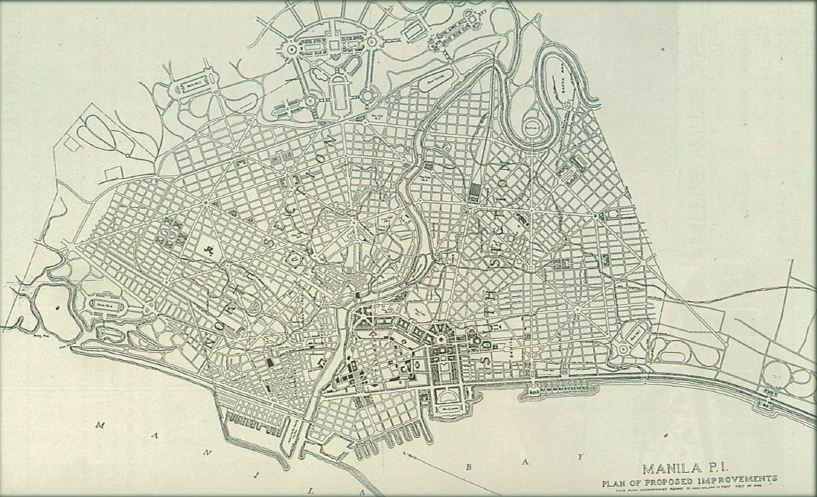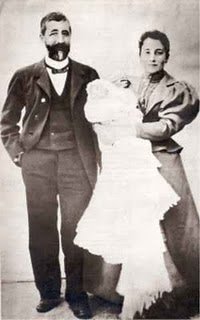|
Spoliarium
The ''Spoliarium'' is a painting by Filipino people, Filipino painter Juan Luna. Luna, working on canvas, spent eight months completing the painting which depicts dying gladiators. The painting was submitted by Luna to the ''Exposición Nacional de Bellas Artes'' in 1884 in Madrid, where it garnered the first gold medal (out of three). The picture recreates a despoiling scene in a Roman circus where dead gladiators are stripped of weapons and garments. Together with other works of the Spanish Academy, the Spoliarium was on exhibit in Rome in April 1884. In 1886, the painting was sold to the Provincial Deputation of Barcelona, provincial government of Barcelona for 20,000 Spanish peseta, pesetas. It is currently displayed in the main gallery at the first floor of the National Museum of Fine Arts (Manila), National Museum of Fine Arts in Manila, and is the first work of art that greets visitors upon entry into the museum. The National Museum considers it the largest painting in ... [...More Info...] [...Related Items...] OR: [Wikipedia] [Google] [Baidu] |
Juan Luna
Juan Luna de San Pedro y Novicio (, ; October 25, 1857 – December 7, 1899) was a Filipino painter, sculptor and a political activism, activist of the Philippine Revolution during the late 19th century. He became one of the first recognized Philippine artists. His winning of the gold medal in the 1884 Madrid Exposition of Fine Arts, along with the silver win of fellow Filipino painter Félix Resurrección Hidalgo, prompted a celebration which was a significant highlight in the memoirs of members of the Propaganda Movement, with the fellow ''Ilustrados'' toasting the two painters' good health and the brotherhood between Spain and the Philippines. Well regarded for work done in the manner of European academies of his time, Luna painted literary and historical scenes, some with an underscore of political commentary. His allegorical works were inspired by classical balance, and often showed figures in theatrical poses. Biography Early life Born in the town of Badoc, I ... [...More Info...] [...Related Items...] OR: [Wikipedia] [Google] [Baidu] |
Manuel Nieto (born 1892)
Manuel Martínez Nieto Sr. (born Manuel Nieto y Martínez; June 13, 1892 - September 15, 1980), also referred to as Manolo Nieto, was a Filipino footballer, businessman, Philippine Commonwealth Army officer, politician and diplomat. An academic and cultured man, his father was owner of the tobacco estate businesses and controller of the monopoly around Northern Luzon, especially in Isabela which Nieto inherited. During his younger days he was a refined athlete as well who competed in track and field but was best known for his football talent. As a football player of the 1910s and 1920s he spent his years at Bohemian SC as a Defender (association football)#Full-back, Defender and was widely regarded as the best Filipino full-back of all time in the eyes of the sports journalists, watchers and athletes of that period. He participated also at the two most remembered Football at the Far Eastern Championship Games, Far Eastern Championship Games in Football at the 1913 Far Eastern Cha ... [...More Info...] [...Related Items...] OR: [Wikipedia] [Google] [Baidu] |
National Museum Of Fine Arts (Manila)
The National Museum of Fine Arts (), formerly known as the National Art Gallery, is an art museum in Manila, Philippines. It is located on Padre Burgos Avenue across from the National Museum of Anthropology in the eastern side of Rizal Park. The museum, owned and operated by the National Museum of the Philippines, was founded in 1998 and houses a collection of paintings and sculptures by classical Filipino artists such as Juan Luna, Félix Resurrección Hidalgo and Guillermo Tolentino. The neoclassical building was built in 1921 and originally served to house the various legislative bodies of the Philippine government. Known as the ''Old Legislative Building'' (also the ''Old Congress Building''), it was the home of the bicameral congress from 1926 to 1972, and the Philippine Senate from 1987 to 1997. History The building was originally designed by the Bureau of Public Works (precursor of the Department of Public Works and Highways) Consulting Architect Ralph Harrington Do ... [...More Info...] [...Related Items...] OR: [Wikipedia] [Google] [Baidu] |
Ambeth Ocampo
Ambeth Raymundo Ocampo is a Filipino public historian, academic, cultural administrator, journalist, author, and independent curator. He is best known for his definitive writings about Philippines' national hero José Rizal and on topics in Philippine history and Philippine art through ''Looking Back'', his bi-weekly editorial page column in the ''Philippine Daily Inquirer''. He served as Chairman of the National Historical Commission of the Philippines from 2002 until 2011 and concurrently as chairman of the National Commission for Culture and the Arts from 2005 to 2007. Early life and education Ocampo was born in Manila in 1961 He received his primary and secondary education at the Basic Education Department of Ateneo de Manila University. He subsequently obtained his undergraduate and masteral degrees in Philippine Studies from the De La Salle University in 1989 and 1991. His undergraduate thesis ''Food in Pampango Culture'' was on Kapampangan cuisine, while his masteral ... [...More Info...] [...Related Items...] OR: [Wikipedia] [Google] [Baidu] |
Félix Resurrección Hidalgo
Félix Resurrección Hidalgo y Padilla (February 21, 1855 – March 13, 1913) was a Filipino artist. He is acknowledged as one of the greatest Filipino painters of the late 19th century, and is significant in Philippine history for having been an acquaintance and inspiration for members of the Philippine reform movement which included José Rizal, Marcelo del Pilar, Mariano Ponce, and Graciano López Jaena, although he neither involved himself directly in that movement, nor later associated himself with the First Philippine Republic under Emilio Aguinaldo. His winning the silver medal in the 1884 Madrid Exposition of Fine Arts, along with the gold win of fellow Filipino painter Juan Luna, prompted a celebration which was a major highlight in the memoirs of members of the Philippine reform movement, with Rizal toasting to the two painters' good health and citing their win as evidence that Filipinos and Spaniards were equals. Early life and education Hidalgo was born in B ... [...More Info...] [...Related Items...] OR: [Wikipedia] [Google] [Baidu] |
Manila
Manila, officially the City of Manila, is the Capital of the Philippines, capital and second-most populous city of the Philippines after Quezon City, with a population of 1,846,513 people in 2020. Located on the eastern shore of Manila Bay on the island of Luzon, it is classified as a Cities of the Philippines#Independent cities, highly urbanized city. With , Manila is one of the world's List of cities proper by population density, most densely populated cities proper. Manila was the first chartered city in the country, designated bPhilippine Commission Act No. 183on July 31, 1901. It became autonomous with the passage of Republic Act No. 409, "The Revised Charter of the City of Manila", on June 18, 1949. Manila is considered to be part of the world's original set of global cities because its commercial networks were the first to extend across the Pacific Ocean and connect Asia with the Hispanic America, Spanish Americas through the Manila galleon, galleon trade. This marked t ... [...More Info...] [...Related Items...] OR: [Wikipedia] [Google] [Baidu] |
Santiago Albano Pilar
Santiago Albano Pilar (15 October 1946 – 12 April 2021) more popularly known as Jak Pilar, was a Filipino art historian, curator, and author. He was best known for chronicling Philippine art centered on the 19th and the 20th century in numerous publications in both the Philippines and overseas. Early life and career Pilar was born in the municipality of Bacarra, Ilocos Norte on 15 October 1946 to Elias Pilar, who served as the municipal judge of Bacarra from 1955 until 1975, and Jesusa Albano. He finished his primary and secondary education at the Vigan Minor Seminary and later transferred to the Convento de San Agustin. Pilar later graduated with a bachelor's degree in art history, at the University of the Philippines Diliman. Art historian After graduating in 1976, Pilar taught courses in art history and connoisseurship in both the undergraduate and graduate programs at the University of the Philippines College of Fine Arts from 1977, until his retirement in 2011. He s ... [...More Info...] [...Related Items...] OR: [Wikipedia] [Google] [Baidu] |
Ermita, Manila
Ermita is a district in central Manila, Philippines. It is a significant center of finance, education, culture, and commerce. Ermita serves as the civic center of Manila, bearing the seat of city government and a large portion of the area's employment, business, and entertainment activities. Private and government offices, museums, and universities thrive in Ermita. It is also home to several tourist attractions and landmarks, including Rizal Park. Ermita and its neighboring district Malate, Manila, Malate were originally posh neighborhoods for Manila's High society (social class), high society during the early 20th century, where large, grandiose mansions once stood. Ermita and its surroundings were heavily bombed and flattened during the Second World War after it became a battleground during the Manila massacre. After the war, Ermita and its twin district, Malate, had undergone commercialization, shifting from a sprawling upscale suburb to a commercial district. History ... [...More Info...] [...Related Items...] OR: [Wikipedia] [Google] [Baidu] |
Padre Faura Street
Padre Faura Street is an east-west street in downtown Manila, Philippines. It carries traffic one-way westbound from Romualdez Street to Roxas Boulevard. Starting at its eastern terminus at Paco Park in Paco, Manila, Paco district, the street heads west for a short stretch towards the intersection with Taft Avenue, where the Manila Science High School is located. Past the intersection, the street traverses the district of Ermita, Manila, Ermita, where several important government institutions, such as the Supreme Court of the Philippines, Supreme Court, the Department of Justice (Philippines), Department of Justice, and the Philippine General Hospital, are located. Also located along this stretch of Padre Faura are the UP Manila College of Arts and Sciences, Robinsons Place Manila, and some hotels and condominiums. The street ends at the intersection with Roxas Boulevard, just across from the U.S. Embassy, Manila, United States Embassy. The street was named after the Jesuit pri ... [...More Info...] [...Related Items...] OR: [Wikipedia] [Google] [Baidu] |
Francisco Franco
Francisco Franco Bahamonde (born Francisco Paulino Hermenegildo Teódulo Franco Bahamonde; 4 December 1892 – 20 November 1975) was a Spanish general and dictator who led the Nationalist faction (Spanish Civil War), Nationalist forces in overthrowing the Second Spanish Republic during the Spanish Civil War and thereafter ruled over Spain from 1939 to 1975, assuming the title ''Caudillo''. This period in Spanish history, from the Nationalist victory to Franco's death, is commonly known as Francoist Spain or as the Francoist dictatorship. Born in Ferrol, Spain, Ferrol, Galicia, into an upper-class military family, Franco served in the Spanish Army as a cadet in the Toledo Infantry Academy from 1907 to 1910. While serving in Spanish protectorate in Morocco, Morocco, he rose through the ranks to become a brigadier general in 1926 at age 33. Two years later, Franco became the director of the General Military Academy in Zaragoza. As a Conservatism, conservative and Monarchism, ... [...More Info...] [...Related Items...] OR: [Wikipedia] [Google] [Baidu] |







